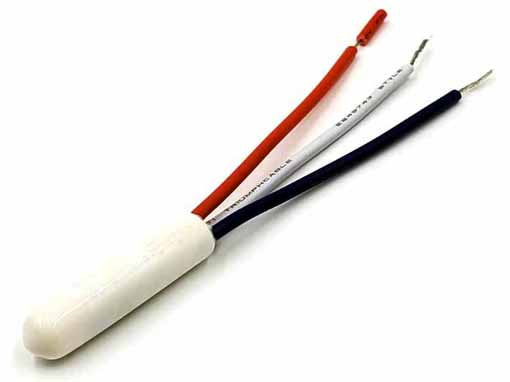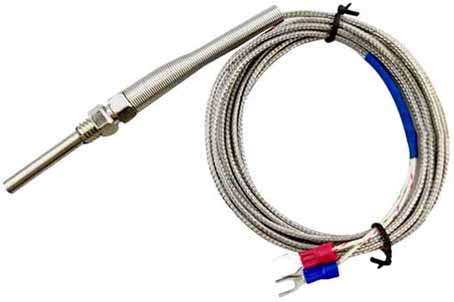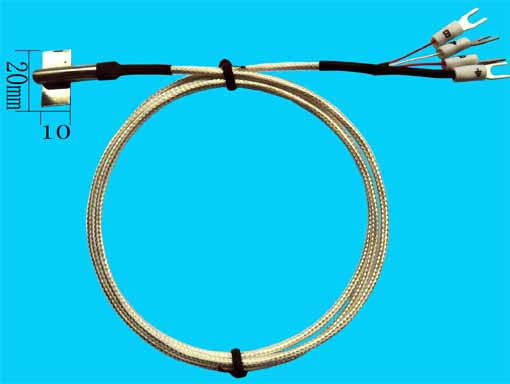The difference between platinum resistance and thermocouple

The difference between a platinum resistance thermometer and a thermocouple is: the temperature measurement range is different, the accuracy is different, the temperature sensing method is different, and the thermal response time is different. In addition, the platinum resistance output is a variable resistance value, and the thermocouple output is a microvolt-level voltage signal.
1. The nature of the signal. The thermal resistance itself is a resistance, and the change of temperature causes the resistance to produce a positive or negative resistance change;
The thermocouple produces a change in induced voltage, which changes with the change of temperature.
2. The temperature ranges detected by the two sensors are different. Thermal resistance is generally detected in the temperature range of 0-200 degrees (of course, negative temperature can be detected). The thermocouple can detect a temperature range of 0-1000 degrees (or even higher). Therefore, the former is low temperature detection, and the latter is high temperature detection.
3. From the material point of view: Thermal resistance is a metal material, a metal material with temperature sensitive changes. The thermocouple is a bimetal material, that is, two different metals, due to temperature changes, a potential difference is generated at the two ends of the two different metal wires.

4. The input modules of thermal resistance and thermocouple corresponding to PLC are also different. This sentence is no problem. But generally PLC is directly connected to 4-20ma signal, and thermal resistance and thermocouple are generally equipped with transmitter before they are connected to PLC. If you connect to DCS, you don't need to use a transmitter! The thermal resistance is the RTD signal, and the thermoelectric ohm is the TC signal!
5. PLC also has thermal resistance modules and thermocouple modules. Can directly input resistance and galvanic signals.
6. Thermocouples are available in J, T, N, K, S and other models, some are more expensive than thermal resistance, and some are cheaper than thermal resistance. However, if the compensation wire is included, the comprehensive cost of the thermocouple is higher. Thermal resistance is a resistance signal, and thermocouple is a voltage signal.
7. The principle of thermal resistance temperature measurement is based on the nature of the resistance of conductors (or semiconductors) changing with temperature, and the measurement range is minus 00 to 500 degrees. Commonly used are platinum resistance (Pt100, Pt10), copper resistance Cu50 (minus 50-150 degrees).
The principle of thermocouple temperature measurement is based on the thermoelectric effect to measure temperature. Commonly used are platinum and rhodium——platinum (graduation number S, measuring range 0~1300 degrees), Nickel chromium-nickel silicon (graduation number K, measuring range 0 ~ 900 degrees), Nickel chromium-Constantan (graduation number E, measuring range 0~600 degrees), Platinum rhodium 30-platinum rhodium 6 (graduation number B, measuring range 0 ~ 1600 degrees).
Thermocouple is a common temperature detection sensor. The working principle for sensing temperature is that the potential of both ends of the temperature change is different;
Thermal resistance can also be called a thermal sensor, but its resistance changes with temperature.

Identification of platinum resistance and thermocouple products
1. Look at the signThermocouple, thermal resistance and other information are marked on the label.
2. Look at the junction box wiring
Thermocouple is generally two leads or Four leads of double branch; Thermal resistance is generally three wires, six wires with double branches. There are four wires for a single thermal resistance, but there are also a few with two wires.
3. Look at the wiring board
Check on the wiring board, the ones with positive and negative (the compensation wires also have positive and negative) are thermocouples, and the ones without positive and negative are thermal resistances.
4. Look at the inner core
The thermocouple is two wires of different materials, the ends are welded together; The thermal resistance is 2 wires of the same material, and the end is connected to a temperature sensing element. Therefore, from the appearance point of view, the head of the thermal resistor has a part with a significantly larger diameter, but the thermocouple does not.
5. Use the resistance profile of a multimeter to measure the resistance; Under normal circumstances, the resistance of the thermocouple is very small, only a few ohms; The resistance body of the thermal resistance is more than 100 ohms at room temperature.





